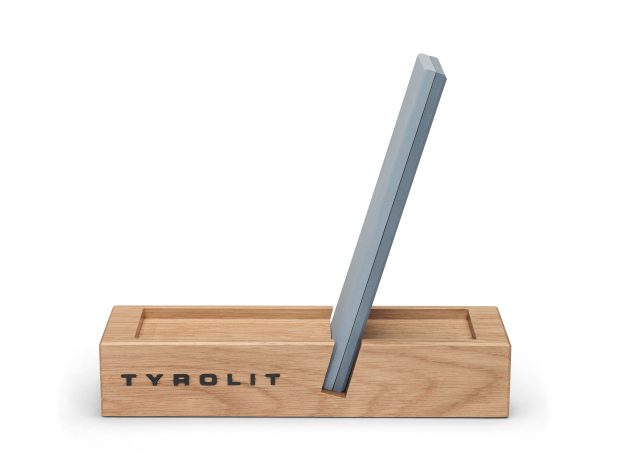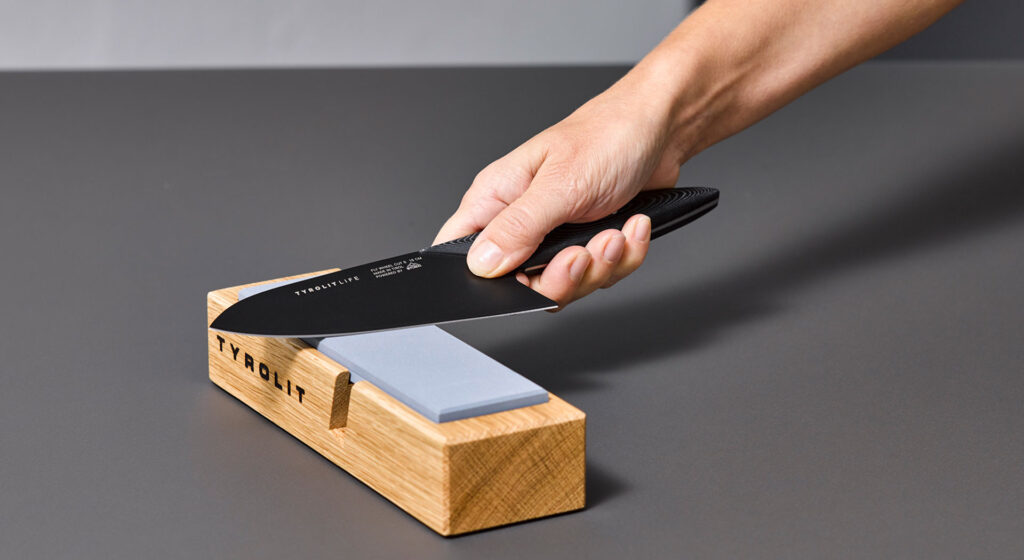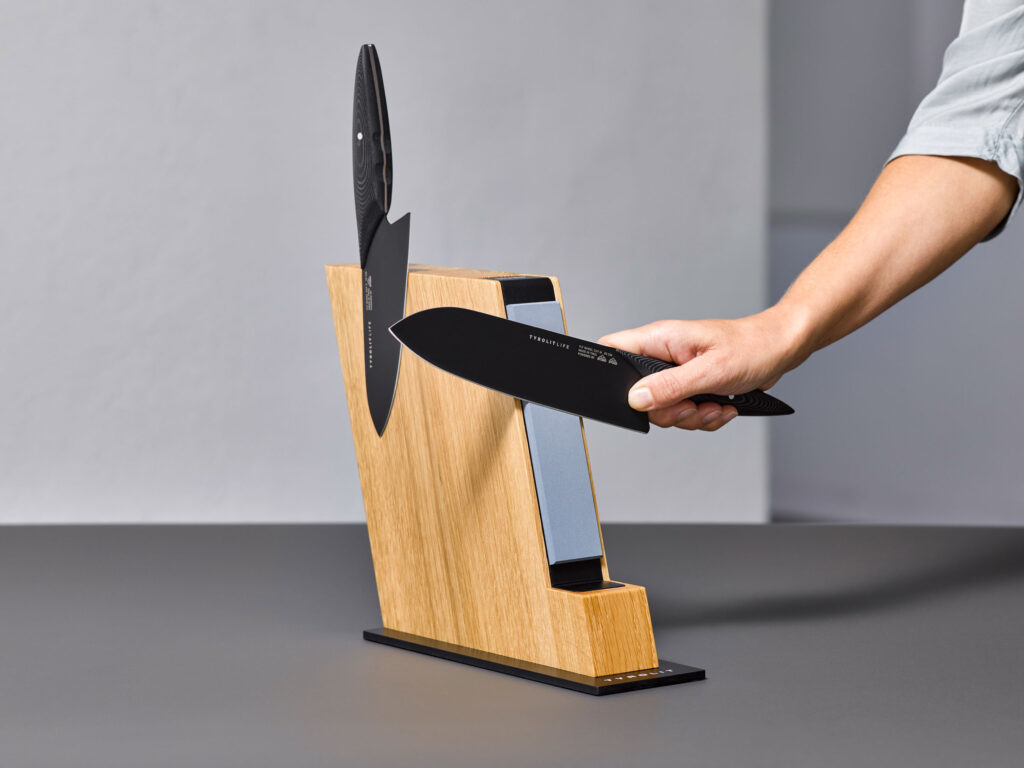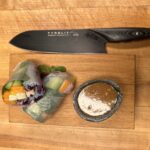Ceramic whetstones – high hardness and maximum lifespan

Ceramic whetstones – small tools with a big impact! In the kitchen, they’ve become indispensable for sharpening knives and other blades. But why have these particular stones become so successful? What makes them so special and sought after?
In this article, we take a look at the properties and benefits of ceramic whetstones. In addition, we learn why they inspire not only chefs, but also amateur chefs alike. And why Tyrolean abrasive expert Tyrolit also relies on whetstones for its knife sharpeners.
4 important advantages of ceramic whetstones – that’s why they’re so popular
Ceramic whetstones are extremely popular. However, the popularity of ceramics per se is not new. The use of ceramic products was already archaeologically proven around 30,000 years ago.
Since then, manufacturing processes have changed and application areas have expanded – from the electrical industry to use as grinding stones. Thanks to their versatility and performance, ceramic grinding stones, for example, are sought-after tools for cooking professionals, amateur chefs and craft enthusiasts alike.
Here are some of the most striking benefits that make ceramic whetstones (but also other types of grindstones and abrasives) so desirable:

1. Great hardness for efficient grinding
Ceramic whetstones have an outstanding hardness, which they owe to their high efficiency in grinding – even against particularly hardened blades, such as those of the kitchen knives from Tyrolit Life.
Ceramic whetstones offer exceptional wear resistance and high performance. These features allow for precise and effective sharpening operations where blades can be sharpened with ease.
2. A wide range of grits
The wide range of grits on ceramic whetstones makes them an extremely versatile choice for sharpening your knives. Because which grit is ideal for sharpening knives depends, among other things, on the degree of wear of your knives.
Coarse grains (for example 400) are ideal for rough grinding. They are used when it comes to restoring the basic sharpness of a blade.
Finer grits (such as 800) are essential for the fine sharpening process. This step focuses on refining the blade’s edge to achieve a razor-sharp finish. Fine-grained sharpening stones allow for precise sharpening and contribute to maintaining the blade’s sharpness at an optimal level.
Combination stones, such as those offered by Tyrolit Life, combine different grain sizes in one whetstone. This allows a seamless transition between coarse and fine grinding without changing the grinding tool. The 400 range is perfect for the initial polish, while the 800 range takes care of the finishing touches.
3. Quick preparation, quick results
Ceramic whetstones are characterized by their rapid readiness for use. Unlike other sharpening stones, ceramic variants often do not require a lengthy soaking time in water. A short moistening is enough to make them ready for use.
Oil can often be skipped as well: in the comparison between water stones and oil stones, the former stand out for their simple application. This also makes ceramic sharpening stones particularly easy to handle, and their cleaning and maintenance are simplified as well.
4. Durable kitchen helper
Ceramic whetstones are not only efficient tools for sharpening knives, but also long-lasting companions in the kitchen. Their exceptional durability makes them a worthwhile investment for any cooking enthusiast.
Due to special manufacturing processes, ceramic whetstones have a remarkable resistance to wear and tear. Even with regular use and intensive use, they retain their sharpness and effectiveness over a long period of time.
In addition, the ceramic whetstones from Tyrolit can be roughened again and again with the supplied abrasive fleece. In order to preserve the qualities of the whetstones as much as possible, they should be stored dry. Falling down is to be avoided, because there is a risk of breakage with ceramic stones.
Alternatives to ceramic sharpening stones – natural stone, grinding machine, etc.
When sharpening knives, various alternatives to ceramic sharpening stones are available – for example:
- Natural stone – Natural sharpening stones, such as Arkansas or Belgian chunks, offer a traditional way of sharpening knives. Due to their natural structure, they create a fine edge.
- Pull-through sharpeners – Pull-through sharpeners are well suited for the regular maintenance of knives. However, they often do not achieve the sharpness that can be attained with other methods. They are ideal for light sharpening tasks but require less precision.
- Grinder – Electric grinders are time-saving and require minimal manual effort. They provide a quick solution for blunt knives. However, they should be used with caution as the high speed may cause overheating and damage to the blade.
- Sharpening Steel – A sharpening steel is a fast method to restore the sharpness of knives. Drawing the blade across the steel straightens it without significant removal of material. This technique is especially good for quick adjustments but is not ideal for truly dull knives.
- Diamond Sharpener – Diamond sharpeners use diamond-coated grinding surfaces to sharpen knives. They are characterized by efficiency and offer quick sharpening. However, their use also requires caution as they can be more aggressive.
On the grinding market, however, there are not only alternatives to the popular ceramic sharpening stone, but also user-friendly developments. Tyrolit Life, for example, relies entirely on ceramic whetstones / ceramic sharpening stones for its knife sharpeners, whose sides are each flanked by a ceramic whetstone. Attached at an angle of 15 degrees – ideal for sharpening most European knives – sharpening is particularly effortless and precise – for both the professional and the beginner.
The Tyrolean company also incorporates its ceramic whetstones into other kitchen accessories, rendering the choice between a sharpening stone and a knife sharpener obsolete. In both the wooden chopping board and the magnetic knife block from Tyrolit Life, a ceramic sharpening stone is integrated. In these, a 15-degree angle is pre-set as well – catering to the highest sharpness demands with minimal effort.

5 Tips for using a ceramic whetstone properly – Simply explained on the Tyrolit Life knife sharpener
Ceramic whetstones are particularly easy to use: just a few steps are sufficient to restore dull knife blades to their former sharpness.
How to use the whetstone correctly? We show you this with the Tyrolit knife sharpener, which is also equipped with a particularly user-friendly feature.
1. Preparation of the whetstone or sharpening stone
Make sure the Tyrolit Life Knife Sharpener is placed on a stable, non-slip surface. Lightly moisten the ceramic whetstone by holding them under running water – soaking is not necessary.
2. Choosing the grit
The Tyrolit Life knife sharpener features two sharpening sections, each with a different grit (400/800). Depending on your needs, select the coarse grit (400) for the initial sharpening, followed by the fine grit (800) for finishing.
3. Knife sharpening at the right angle
The Tyrolit Life knife sharpener comes with a pre-set sharpening angle of 15 degrees. Just position the knife perpendicular to the table edge and draw it smoothly across the sharpening stone.
4. Achieve optimal results
When sanding, proceed evenly so that you achieve the most uniform result possible. Sharpen the entire length of the blade with a few strokes, then move to the other side of the blade. Use the different grits of the knife sharpener to restore the basic sharpening first and then the final sharpness.
5. Cleaning and care
After use, it’s important to clean both the knives and the sharpening stones. For the sharpening stone, ensure you wash it thoroughly to remove any remnants of grinding. Then, store it in a dry place until its next use – the ceramic sharpening stone doesn’t require any special care. Should the Tyrolit sharpening stone’s surface become smooth over time, you can roughen it up again with the included abrasive fleece.
The knives should be well dried and stored safely after cleaning. Tyrolit also has the right kitchen helper for this: The magnetic knife block protects your blades from premature blunting. As with the Tyrolit cutting board, the integrated ceramic whetstone ensures that knife sharpening becomes an uncomplicated routine in everyday kitchen life.
FAQs
Which whetstone or sharpening stone is suitable for what?
Why should you soak a whetstone in water?
Why do you need to wet a sharpening stone or whetstone?
Which grit is ideal for a whetstone?


